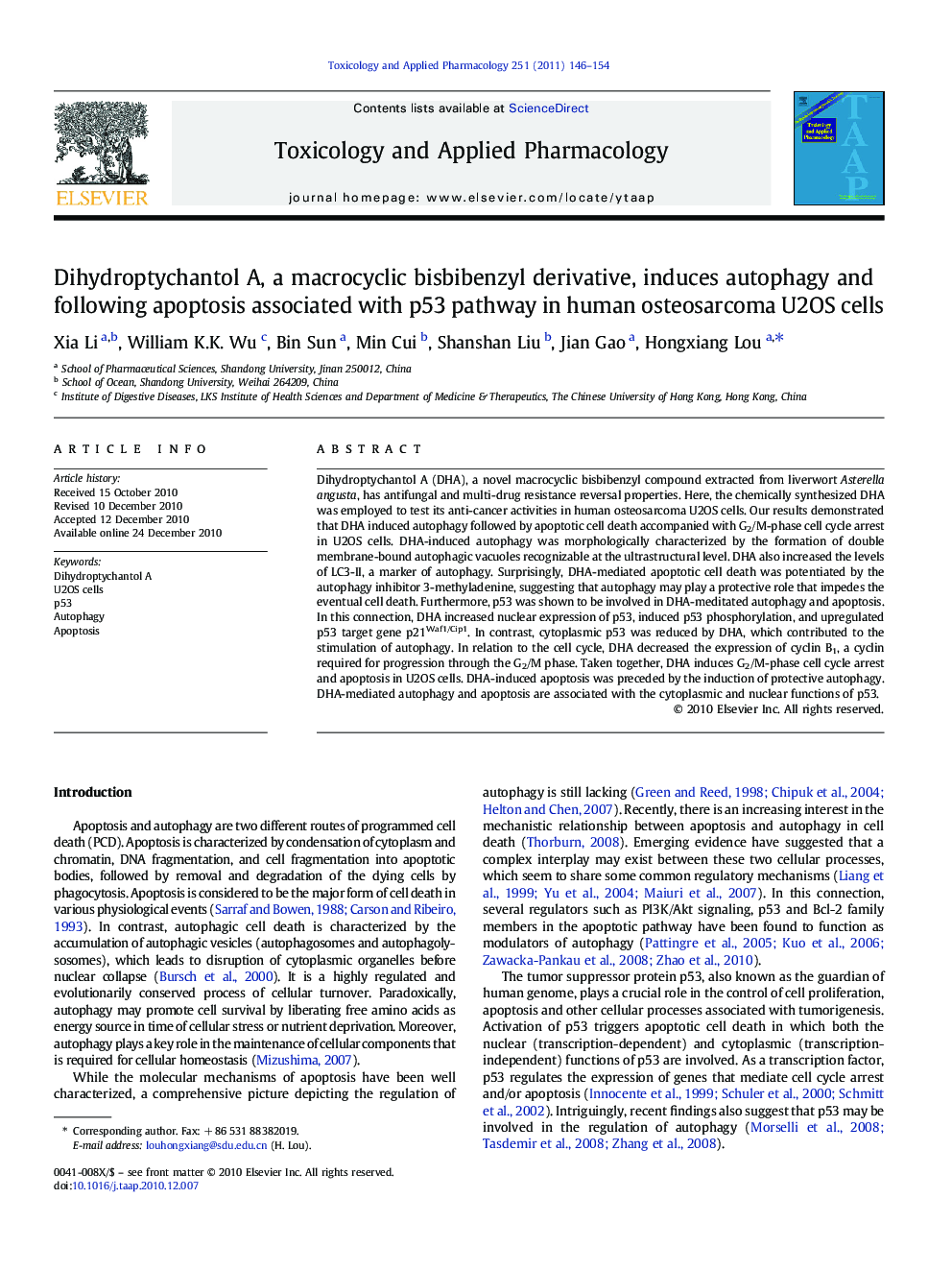| Article ID | Journal | Published Year | Pages | File Type |
|---|---|---|---|---|
| 2569971 | Toxicology and Applied Pharmacology | 2011 | 9 Pages |
Dihydroptychantol A (DHA), a novel macrocyclic bisbibenzyl compound extracted from liverwort Asterella angusta, has antifungal and multi-drug resistance reversal properties. Here, the chemically synthesized DHA was employed to test its anti-cancer activities in human osteosarcoma U2OS cells. Our results demonstrated that DHA induced autophagy followed by apoptotic cell death accompanied with G2/M-phase cell cycle arrest in U2OS cells. DHA-induced autophagy was morphologically characterized by the formation of double membrane-bound autophagic vacuoles recognizable at the ultrastructural level. DHA also increased the levels of LC3-II, a marker of autophagy. Surprisingly, DHA-mediated apoptotic cell death was potentiated by the autophagy inhibitor 3-methyladenine, suggesting that autophagy may play a protective role that impedes the eventual cell death. Furthermore, p53 was shown to be involved in DHA-meditated autophagy and apoptosis. In this connection, DHA increased nuclear expression of p53, induced p53 phosphorylation, and upregulated p53 target gene p21Waf1/Cip1. In contrast, cytoplasmic p53 was reduced by DHA, which contributed to the stimulation of autophagy. In relation to the cell cycle, DHA decreased the expression of cyclin B1, a cyclin required for progression through the G2/M phase. Taken together, DHA induces G2/M-phase cell cycle arrest and apoptosis in U2OS cells. DHA-induced apoptosis was preceded by the induction of protective autophagy. DHA-mediated autophagy and apoptosis are associated with the cytoplasmic and nuclear functions of p53.
